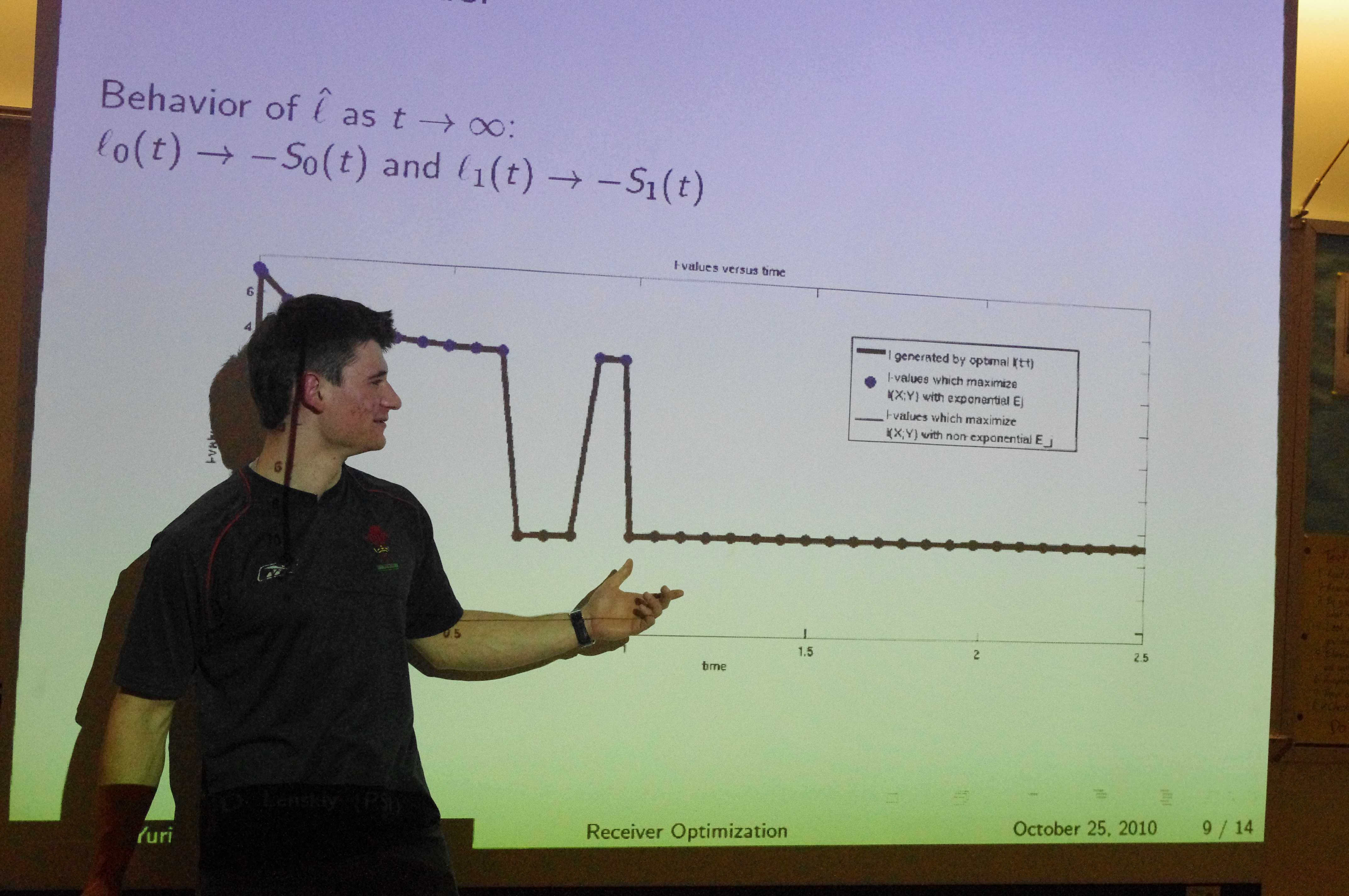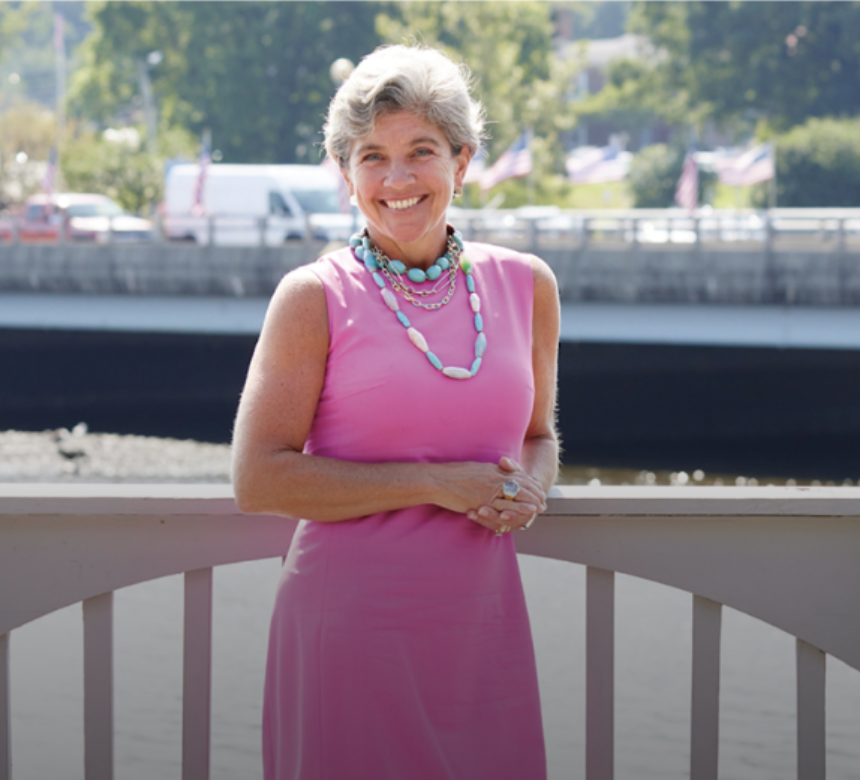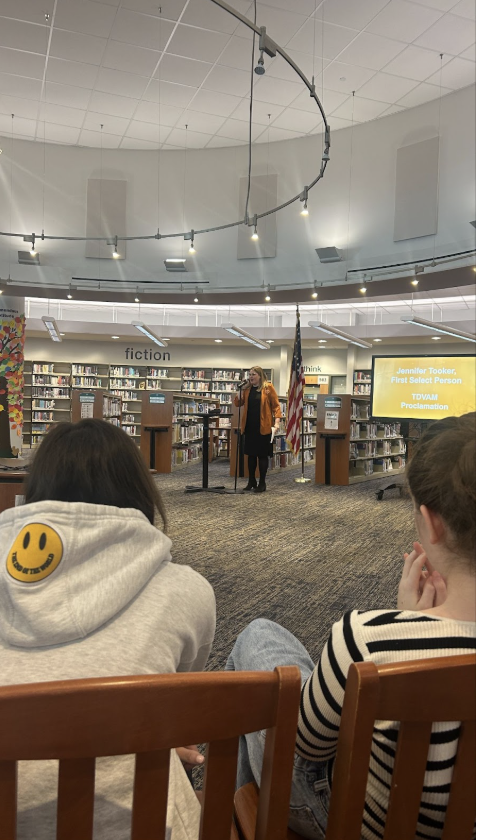
One period a day, four days a week, Marcus Russi ’13 goes to room 3022. During the period, he completes labs, fills out science fair applications, and reads articles.
But it is outside of school that the majority of his work for Authetic Science Research (ASR) takes place.
“The goal of [ASR] is to give students the opportunity to pursue an independent science research experiment,” said Dr. Nick Morgan, who teaches the course with Dr. Michele Morse.
ASR requires students to commit to three years of enrollment. Each year of the course has a different goal. During the first two years, students hone their research skills, an in the third year of the program, students enter competitions and work towards getting their research published in journals.
For example, during Tessa Green ‘11’s sophomore year, she studied stem cells and biology. Junior year, she developed new structures for flow batteries.
Most recently, she evaluated the spread of radioactivity in a nuclear reactor.
Russi, who started this year, decided to enroll because he was “curious about science”.
While Russi enjoyed the middle school and ninth grade science curriculum, he wanted to learn more about the behind the scenes aspects of the science.”
“I was usually interested in the reasons why things were and how people came to discover them,” Russi said. “ASR allows me to learn the process that researchers go through to make sure their work is accurate.”
Angus Armstrong ’13 joined the course for similar reasons: a love of science and a drive for independence in a learning environment.
“I had a desire to take an additional science course that would push me to create and conduct my own project,” Armstrong said.
While both Armstrong and Russi agree that ASR students must be independent and self-motivated, they also point out the fact that it is the individual who determines the difficulty level of the course.
“It could be as hard as an AP science course or as easy as a [simple] class,” Russi said.
Yuri Lenskiy ’11 has undoubtedly chosen the former, but even he admits that the workload can vary from unusually light to his “heaviest class by far.”
Morgan recommends doing at least seven hours of work every two weeks, however many students opt to do more work outside of school in order to further their projects.
Lenskiy describes his favorite and most recent project, titled “Modeling an Optimal Receiver for the Binary Quantum Channel,” as a “brand new way to look at quantum computing.”
His project took first place in Physical Science at the Feb. 5 Southern Connecticut Invitational Science and Engineering Fair (SCISEF).
Lenskiy’s project was extremely time consuming in and outside of class.
It is this that separates ASR from Lenskiy’s other, more traditional classes here at Staples. Projects do not begin and end during the period. In fact, Green says she does the majority of her work at home.
Their intense commitment and investment in the projects have brought both Green and Lenskiy success outside of ASR.
As a result of their hard work, they were invited to attend a research program at MIT during the summer of 2010.
The program is highly selective, admitting only 50 students nationwide.
Green calls the program “the first time I ever really created something.”
“I really enjoyed the work I did this summer at MIT…I’m proud of the fact that I was able to learn about an entirely new field, then make contributions to it,”
Before Green began ASR, she hated science classes. Now she says she intends to pursue a career in science.
“ASR showed me that science is about exploring new things rather than memorizing old ones,” Green said.
Other ASR success stories include those of Rachel Myers ’11 and Jason Gandelman ’10, who both placed highly in the Intel Science Talent Search. The research-based science competition is the nation’s oldest talent search.
Morgan stresses that there are plenty of opportunities to pursue science outside of the classroom. These opportunities include working at a local university lab, interning during the summer, or participating in science fairs.
“Science is all around us, how could you not become more involved?” Morgan said.
Countless ASR students have taken advantage of these learning opportunities, finding the foundation for their vast knowledge in the classroom.
“I hope that our students are better trained to think about the science that’s around them every day, and to approach new activities and content areas with an inquisitive and analytical mind,” Morgan said. “That’s what science is all about.”












































